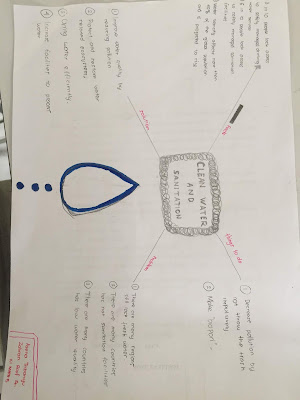Hello guys! Now I'm going to tell you one of the most interesting natural phenomena in the world, tornado.
So, a tornado is a violently rotating column of air extending from the base of a thunderstorm down to the ground. Tornadoes are capable of completely destroying well-made structures, uprooting trees, and hurling objects through the air like deadly missiles. Tornadoes can occur at any time of day or night and at any time of the year. Although tornadoes are most common in the Central Plains and the southeastern United States, they have been reported in all 50 states.
We have to know how to evacuate from this disaster because if we know what to do before, during and after a tornado, we will minimize our risk of injury and increase our chances of survival. We'll also find links to research, past events other topics of interest as well as downloadable safety handouts about thunderstorms, lightning, and tornadoes.
Various types of tornadoes include the multiple vortex tornado, landspout, and waterspout. Waterspouts are characterized by a spiraling funnel-shaped wind current, connecting to a large cumulus or cumulonimbus cloud. They are generally classified as non-supercellular tornadoes that develop over bodies of water, but there is disagreement over whether to classify them as true tornadoes. These spiraling columns of air frequently develop in tropical areas close to the equator and are less common at high latitudes. Other tornado-like phenomena that exist in nature include the gustnado, dust devil, fire whirl, and steam devil.
Tornadoes occur most frequently in North America, particularly in central and southeastern regions of the United States colloquially known as tornado alley, as well as in Southern Africa, northwestern and southeast Europe, western and southeastern Australia, New Zealand, Bangladesh and adjacent eastern India, and southeastern South America. Tornadoes can be detected before or as they occur through the use of Pulse-Doppler radar by recognizing patterns in velocity and reflectivity data, such as hook echoes or debris balls, as well as through the efforts of storm spotters.
There are several scales for rating the strength of tornadoes. The Fujita scale rates tornadoes by damage caused and has been replaced in some countries by the updated Enhanced Fujita Scale. An F0 or EF0 tornado, the weakest category, damages trees, but not substantial structures. An F5 or EF5 tornado, the strongest category, rips buildings off their foundations and can deform large skyscrapers. The similar TORRO scale ranges from a T0 for extremely weak tornadoes to T11 for the most powerful known tornadoes. Doppler radar data, photogrammetry, and ground swirl patterns (trochoidal marks) may also be analyzed to determine intensity and assign a rating.


